
How to protect yourself from loons, goons, and other practice partners

Dr. Snyder, a well-known consultant, publishes the Snyder Advisory Letter, a newsletter focused on practice productivity. He is a long-standing member of DVM Newsmagazine's Editorial Advisory Board.

How to protect yourself from loons, goons, and other practice partners

Staff training, net earnings, location, and an honest practice valuation may be holding back your practice's profitabilty.
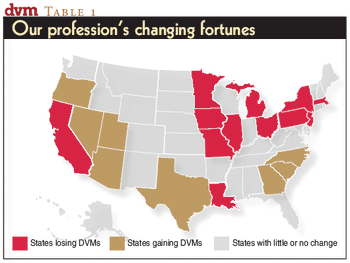
There is little doubt that we, as a profession, are suffering the multiple effects of not-enough-self-Âinterest.

We all probably know the colorful humor that starts out with "What are the three greatest lies ever told?" To me they relate to the current misconceptions about the future of our profession.

Evaluate your animal hospital's staffing, equipment, inventory and more

Profitability is key to determining its true value

The watchword in this recession is less. Clients spend less, and our bottom line takes a nosedive. We clearly need to provide for ourselves and our staff by lowering expenses.

Every practice, whatever its size, needs a strong, reliable manager to oversee associates and staff. Once trained, he or she should have a relatively free hand to deal with all management problems as they arise.

Use this form to highlight where your manager is succeeding--and where improvement is needed.

Violate the 5-to-7 ratio at your risk. That is the ratio between a veterinary practice's gross revenue and the cost of paraprofessional staff. Anything outside that ratio is bad for the practice.

There's nothing unethical about trying to increase average client transactions.
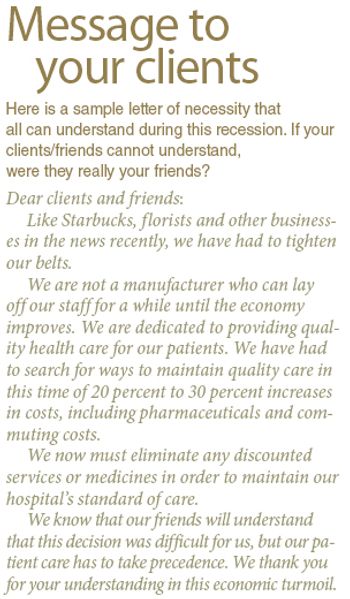
Tough talk is the basis of my column. And it's especially needed as our struggling economy flops around like a newly caught fish in the bottom of your boat.

Brace yourselves. Sometime this summer, coming to an area near you, will be the new graduate.
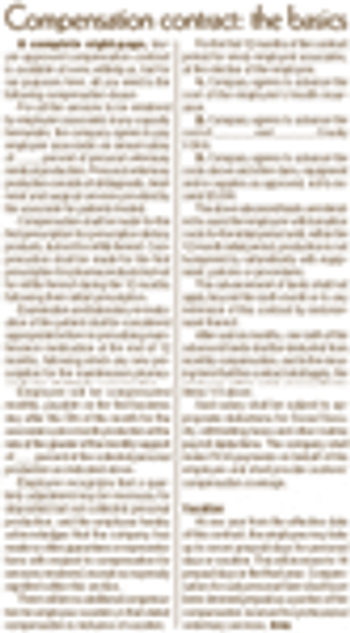
How do you determine the percentage that goes into a production-based pay contract for an associate?

Our immediate future is about 80 watts short of bright.

It's Monday morning, and only three clients came in.

It's human nature to have biases - preconceived notions - that shade our daily experiences.

Life can be very strange indeed. The Bureau of Labor Statistics proclaims veterinary medicine to be one of the fastest-growing fields. Yet, if you are a companion-animal practitioner in a mature practice, your transactions are likely down for each year of this decade.
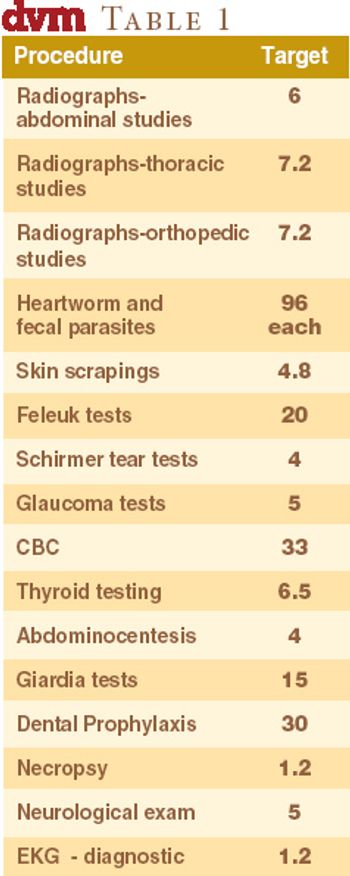
Paying attention to demographics, finances, diagnostics yields benefits.

Gerald Snyder, VMD, provides an analysis on client visits and the changing times.
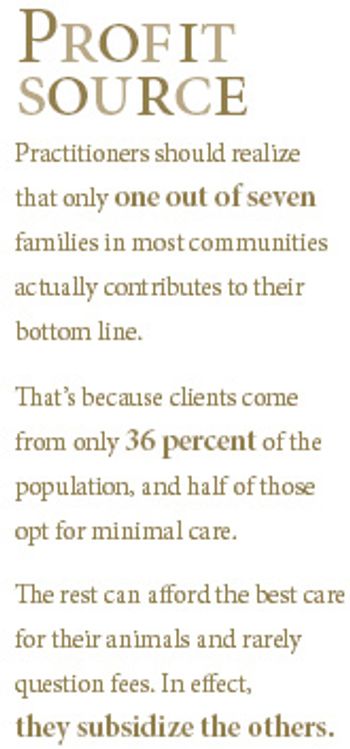
It's a cloudy day for veterinary medicine.

The Pareto Principle is an observation (not a law) that most things in life are not distributed evenly. It could mean any or all of the following:

A hard-working solo veterinarian reaches 67 years of age and wants to sell his practice and retire after 25 years of building it up. It's a no-brainer - or is it?

So why do we have such poor self-esteem? Is it getting worse?

No is the abbreviation for Norway and the element Nobelium.

A man flying in a hot-air balloon realized he was lost. Reducing altitude, he spotted a fellow on the ground and descended to shouting range.

To invest our hard-earned dollars, many of us purchase securities in the stock market. It is purely legalized gambling. We are betting that, at some future date, we can sell that stock for a profit.
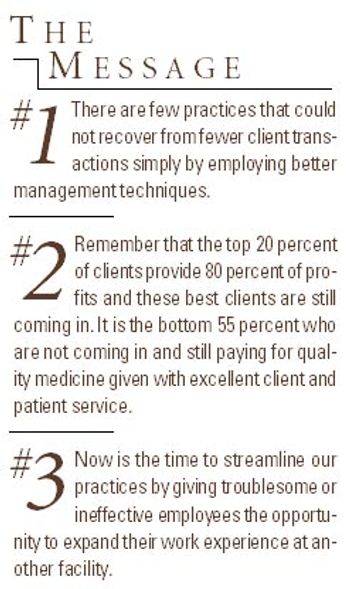
I hear from 20 or more veterinarians every day, most of whom want to tell me about the economic downturn in their area and the fact that clients just are not coming in as frequently, so their revenues are down.

Brief message for the practice selling $1 cat toys: It costs well over $2 just to print out an invoice

Dr. X has a 25-year-old practice that is having trouble meeting expenses. Payroll is covered, but what's left over is about $5,000 short of last year.